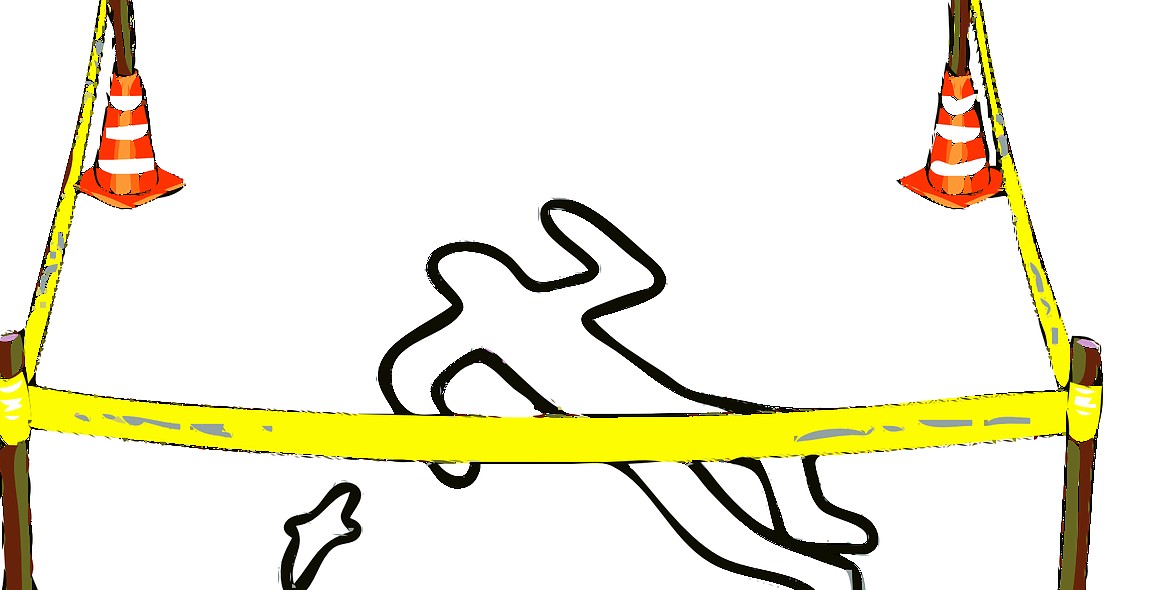How to Process a Crime Scene: Evidence Collection and Documentation
Processing a crime scene is a crucial step in solving a crime. It involves collecting, documenting, and preserving physical evidence that could be used to identify suspects and build a case against them. As a professional article writer and content creator with extensive experience in the field, I have witnessed firsthand the importance of proper evidence collection and documentation.
Why is evidence collection and documentation important?
Without proper evidence collection and documentation, it’s nearly impossible to solve a crime. Physical evidence can provide critical information about a crime, such as the type of weapon used, the identity of the suspect, and the manner in which the crime was committed. If evidence is not collected and documented properly, it can be lost, contaminated, or rendered inadmissible in court.
What are the steps involved in processing a crime scene?
The process of processing a crime scene involves several steps, including:
- Securing the scene
- Documenting the scene
- Collecting physical evidence
- Preserving and packaging the evidence
- Submitting the evidence for analysis
Conclusion
Processing a crime scene is a complex process that requires attention to detail, patience, and expertise. By following the proper steps for evidence collection and documentation, law enforcement officials can increase the chances of solving a crime and bringing perpetrators to justice.

The Importance of Proper Crime Scene Processing
Proper crime scene processing is essential to ensure the successful prosecution of a criminal case. It involves preserving evidence and maintaining the chain of custody, which are critical components of any criminal investigation.
Preserving Evidence
Preserving evidence is crucial in any criminal investigation. It involves identifying, collecting, and securing all potential evidence at a crime scene. This evidence can include physical objects, biological materials, and any other items that may be relevant to the investigation. Proper preservation of evidence can help to establish the facts and circumstances surrounding a crime, identify suspects, and ultimately lead to a successful prosecution.
The Role of Documentation
Documentation is a critical aspect of preserving evidence. Crime scene investigators must document every step of the evidence collection process, including the location of each item, who collected it, and when it was collected. This documentation serves as evidence in court and can help to establish the chain of custody.
Maintaining Chain of Custody
Maintaining the chain of custody is a crucial component of proper crime scene processing. It involves tracking the movement of evidence from the crime scene through the chain of custody to the forensic laboratory and ultimately to the courtroom. This process ensures that the evidence is not tampered with and that it can be linked back to the crime scene.
The Importance of Proper Labeling
Proper labeling is essential to maintaining the chain of custody. Each piece of evidence must be labeled with a unique identifier, such as a case number or exhibit number, and must be logged in a chain of custody log. This log should include the name of the person who collected the evidence, the date and time it was collected, and any other relevant information.
In conclusion, proper crime scene processing is critical to the success of any criminal investigation. Preserving evidence and maintaining the chain of custody are essential components of this process and require careful attention to detail and documentation. By following these procedures, investigators can ensure that evidence is properly collected, preserved, and presented in court, leading to a successful prosecution.
Initial Steps in Crime Scene Processing
Processing a crime scene requires a systematic and thorough approach to ensure that all evidence is collected and documented in a manner that is admissible in court. The initial steps in crime scene processing involve securing and assessing the scene.
Securing the Scene
The first step in processing a crime scene is to secure the area to prevent any unauthorized access or tampering with evidence. This involves establishing a perimeter around the scene and restricting access to only authorized personnel. The perimeter should be large enough to ensure that all potential evidence is contained within the area.
Once the perimeter is established, the crime scene investigator (CSI) should document the scene by taking photographs and making sketches. This documentation should include the location of all physical evidence, such as bloodstains, weapons, and footprints.
Assessing the Scene
After securing the scene, the CSI should assess the area to determine the type of crime that has been committed and the potential evidence that may be present. This involves examining the scene for any signs of forced entry, the location and position of the victim(s), and any potential weapons or other items that may have been used in the crime.
The CSI should also look for any potential sources of evidence, such as fingerprints, DNA, or other physical or biological materials. It is important to collect all potential evidence, even if it does not appear to be directly related to the crime, as it may be useful in corroborating other evidence or ruling out potential suspects.
Overall, securing and assessing the scene are critical initial steps in crime scene processing that set the foundation for the rest of the investigation. By following a systematic and thorough approach, CSIs can ensure that all evidence is collected and documented in a manner that is admissible in court.
Evidence Collection
Collecting evidence is a crucial aspect of processing a crime scene. Evidence can help investigators identify suspects, establish timelines, and build a case against the perpetrator. There are several types of evidence that investigators may collect at a crime scene.
Types of Evidence
Physical evidence is the most common type of evidence collected at a crime scene. This includes items such as fingerprints, DNA samples, and clothing. Other types of evidence that may be collected include:
- Weapons
- Footprints
- Tire tracks
- Bloodstains
- Hair and fibers
- Documents
Each type of evidence requires different collection techniques to ensure its preservation and integrity.
Collection Techniques
When collecting physical evidence, it is important to use proper techniques to avoid contaminating the evidence. Collection techniques may vary depending on the type of evidence being collected. Some common collection techniques include:
- Fingerprinting: Using fingerprint powder and tape to lift fingerprints from surfaces.
- Swabbing: Using sterile cotton swabs to collect DNA samples from bloodstains or other surfaces.
- Photography: Taking photographs of the crime scene and evidence to document its location and condition.
- Bagging and tagging: Placing evidence in paper or plastic bags and labeling them with information such as the date, time, and location of collection.
It is important for investigators to follow proper collection techniques to ensure that evidence is not compromised or contaminated. Once evidence is collected, it must be properly documented and stored to ensure its integrity.
| Technique | Uses |
|---|---|
| Fingerprinting | Collecting fingerprints from surfaces |
| Swabbing | Collecting DNA samples from surfaces |
| Photography | Documenting the crime scene and evidence |
| Bagging and tagging | Properly storing and labeling evidence |
Documentation
Proper documentation is crucial when processing a crime scene. It ensures that all evidence collected is admissible in court and helps investigators recreate the scene accurately. There are three main methods of documentation: photography and videography, sketching the scene, and notes and reports.
Photography and Videography
Photography and videography are essential in documenting a crime scene. They provide a visual record of the scene and the evidence collected. It is important to take photos and videos from different angles and distances to capture all aspects of the scene. The use of a tripod and a ruler in the photos can help with scale and perspective. Additionally, it is crucial to document the condition of the evidence as it was found.
Sketching the Scene
Sketching the scene is another crucial method of documentation. It provides a visual representation of the scene and the location of the evidence. The sketch should include accurate measurements, such as the distance from one item of evidence to another, and the distance from the evidence to the walls or other landmarks. The sketch should also include notes on the location of the evidence in relation to the victim or suspect.
Notes and Reports
Notes and reports are also important methods of documentation. They provide a written record of the scene and the evidence collected. It is important to take detailed notes on the condition and location of the evidence, as well as any observations made at the scene. Reports should include a summary of the investigation, including the methods used to collect the evidence, any analysis performed, and any conclusions drawn from the evidence.
| Documentation Method | Key Points |
|---|---|
| Photography and Videography | Take photos and videos from different angles and distances, document the condition of the evidence as it was found, use a tripod and ruler for scale and perspective. |
| Sketching the Scene | Include accurate measurements, notes on the location of the evidence in relation to the victim or suspect. |
| Notes and Reports | Take detailed notes on the condition and location of the evidence, any observations made at the scene, include a summary of the investigation, including the methods used to collect the evidence, any analysis performed, and any conclusions drawn from the evidence. |

Conclusion
Processing a crime scene is a complex and highly specialized task that requires a great deal of skill, knowledge, and attention to detail. Evidence collection and documentation are the two most critical aspects of crime scene processing, and they require a systematic and methodical approach to ensure that all relevant information is captured accurately and thoroughly.
As we have seen in this article, there are many different techniques and tools that crime scene investigators can use to collect and document evidence, including photography, sketching, note-taking, and the use of specialized equipment such as fingerprint kits and DNA swabs. By following these best practices and using the latest technology, investigators can ensure that they are collecting and preserving evidence in a way that is admissible in court and that can help to bring criminals to justice.
Whether you are a seasoned crime scene investigator or just starting out in the field, it is essential to stay up-to-date with the latest techniques and best practices for evidence collection and documentation. By doing so, you can help to ensure that justice is served and that the guilty are held accountable for their crimes.
Thank you for reading this article on how to process a crime scene. We hope that you have found it informative and useful in your work as a crime scene investigator. If you have any questions or comments, please feel free to leave them below!
